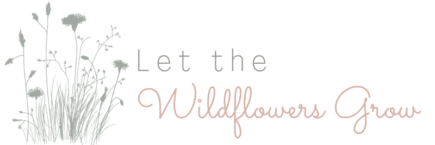Breaking down a design is easily done when you take a step back and look at each individual piece of the design.
There are a few main concepts of design that make this a visually appealing ad. Chili’s was promoting their free dessert special (you can click here to see where I found this ad and other great examples of commercial ads), but this simple ad speaks volumes in a quick effective way. This ad easily draws people so they know right away what’s being offered. Let’s reverse engineer their design using 5 main design concepts to find precisely what they did to create such a visually enticing ad.

1. Alignment
They have used a center alignment for the text and have also aligned the image with the text. Putting the image of the dessert under the text makes the whole ad balanced on both sides, top and bottom. The white space around the image and the main text creates a strong focal point allowing the center alignment to shine.
The alignment is one element in this commercial ad that creates a sense of unity. Another important concept that has been implemented in the design is proximity.

2. Proximity
Proximity is how much space is between the different elements in a design. The main text is in close proximity to the image of the dessert because they have a relationship. The text is talking about what’s being displayed in the image. This makes it very easy for someone to put two and two together and quickly understand the message of the ad.
The proximity of the elements in this design creates a sense of organization. The logo in the upper left hand corner makes the design balanced, interesting, and it provides vital information. But it isn’t necessary for it be crammed within the main text, this would ultimately make the design look cluttered.
Because the focus of the ad is about the free dessert, the logo can stand on its own. This makes the design stronger and it even allows the restaurant to stand out more.

3. Repetition
In the first image you can clearly see how repetition has been applied in a very simple way, the logo, the graphics, and the text are all white.
In the second image, we get down to the nitty-gritty details of repetition. The logo has curved thin lines, with an open concept. Meaning the shape around “Chili’s” isn’t filled in. The same concept has been carried over to the design of the graphics, the tree, the moon, the heart under the text, and even the park bench all have thin lines and the open concept.
The hearts are repeated throughout the graphic, and even below the text tying the whole center piece together creating continuity. Another repeating element in this simple design are the 2 solid circles by the moon and the solid circles branching out from the heart under the text.
The text has a few design elements that should also be noted. It has a repeating element as both lines of text are in all caps. But they also include contrast.
4. Contrast
To have a good design you have to use contrast. This Chili’s ad accomplishes this in a couple different ways.
- The top row of text is a larger font size than the second row of text. This tells the viewer right away what’s important. The black text helps catch someone’s eye and it gives unity as it’s also a repeating element using a dark hue like the skillet pan.
- The white logo, graphics, and text all stand out on the red background. The white stands out because of the different tones and shades in the red, it wouldn’t be as visually stunning if the designer were to have used another warm color on top of the warm red. But the white creates a distinct contrast.
- There is a contrast in the different types of red from top to bottom in this design. You can see the top and the bottom are a darker red while the middle is a light shade of red. This adds depth and emphasizes the focal point.

5. Color
Color is essential to creating a cohesive design. Most marketers and designers will implement psychology to find what colors to use in their design so they can properly advertise to their target audience and produce the results they’re hoping for. Red is iconically a bold and intense color, it elicits excitement and action, but it can also be used to signal danger. So it’s important to use this bold color wisely.
Which the designer for this ad has done. The multi-gradient and slight texture of the background evokes excitement and interest. The use of the high-quality image of the dessert draws people in. The dark tones of the skillet and the white in the design also help soften and add variety to the boldness of the red background. If the ad were just a solid red with no variation then it would be overwhelming and wouldn’t be appealing.

In conclusion
When creating an ad for commercial use implementing these 5 different design concepts will create a visually stunning piece. By applying the rule of proximity and alignment you organize your content in a manner that allows people to quickly make sense of your ad. By using repetition you create consistency. Contrast and color are also essential to creating an appealing design that will draw people in and leave a lasting impression.




